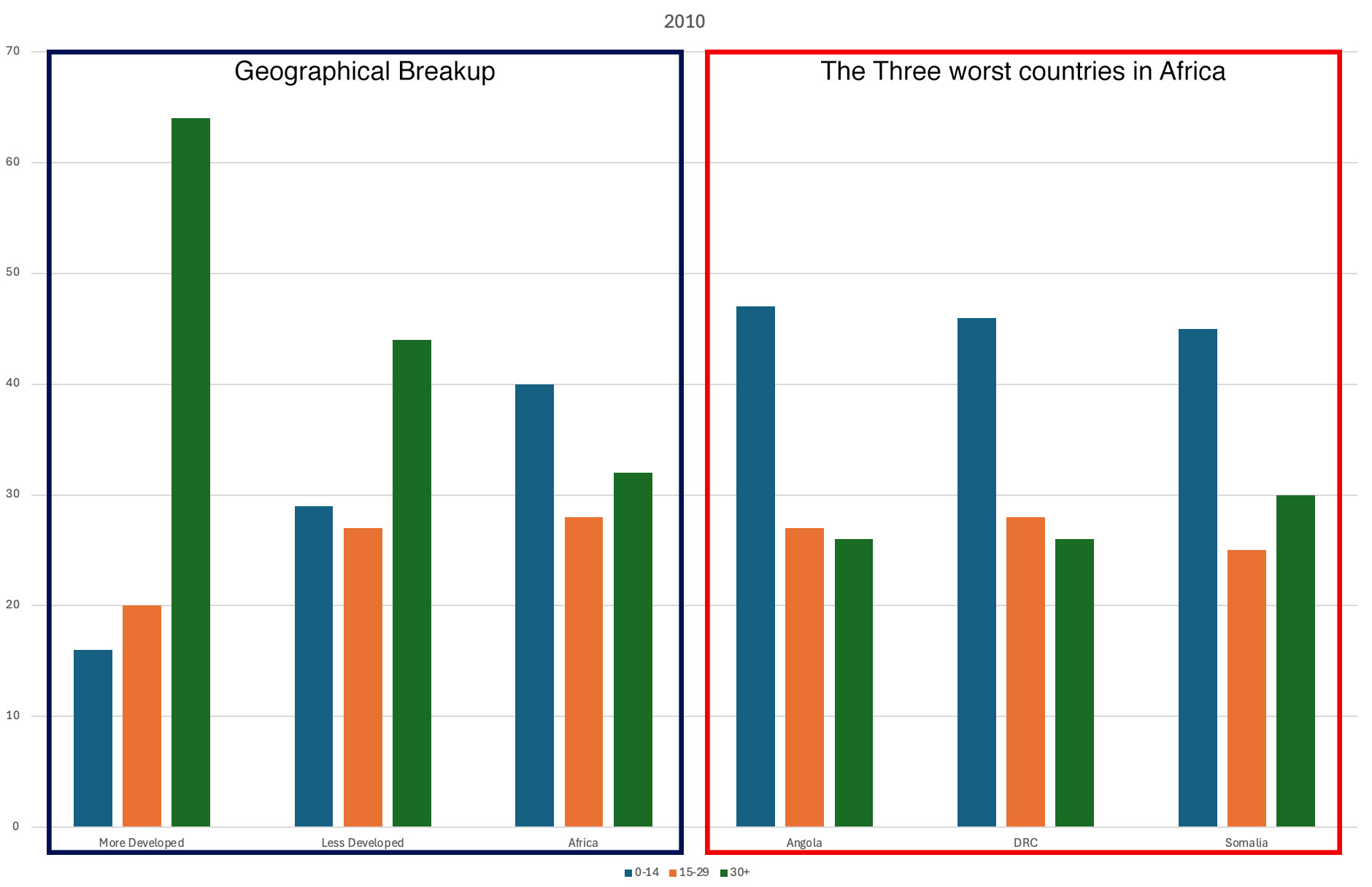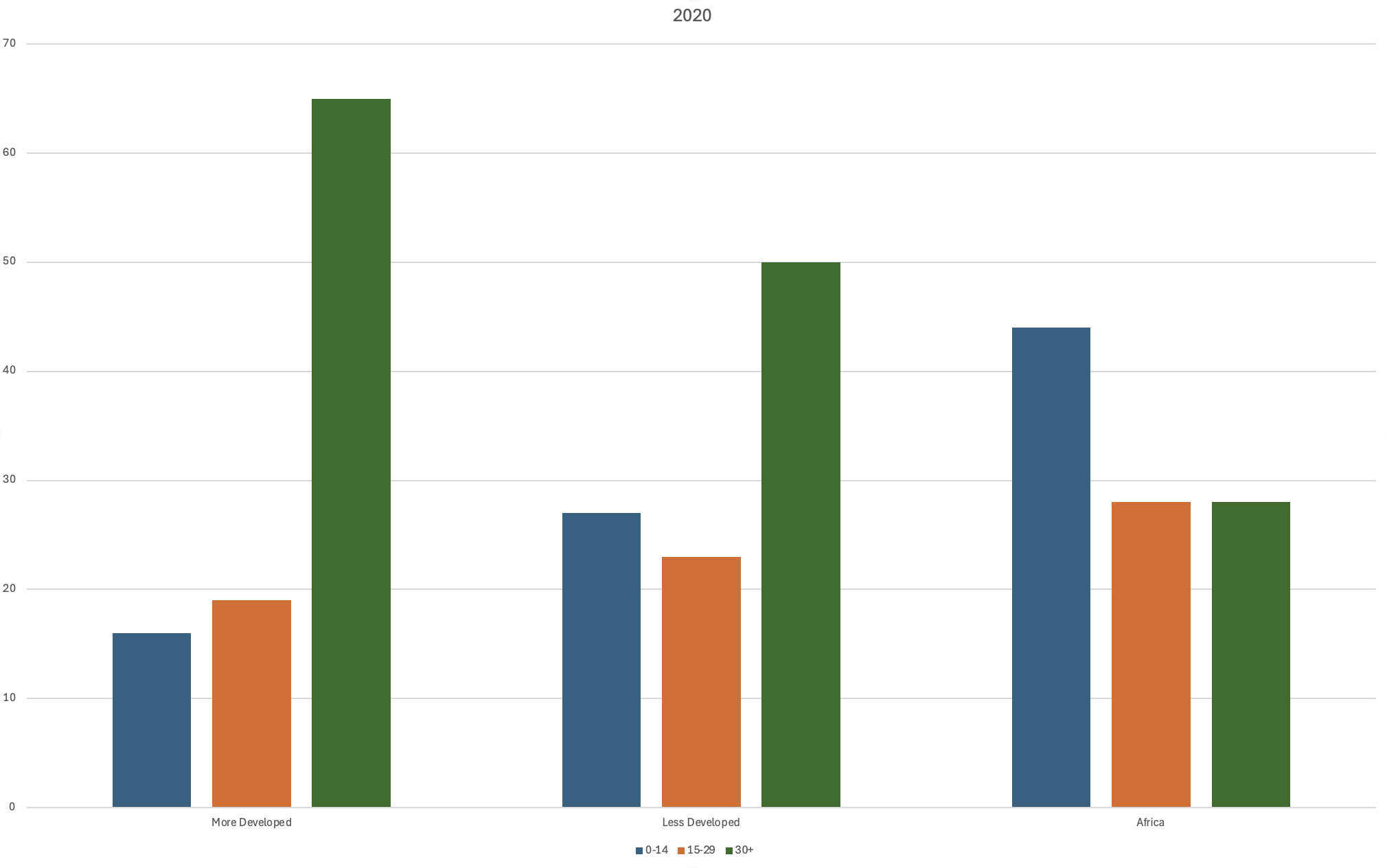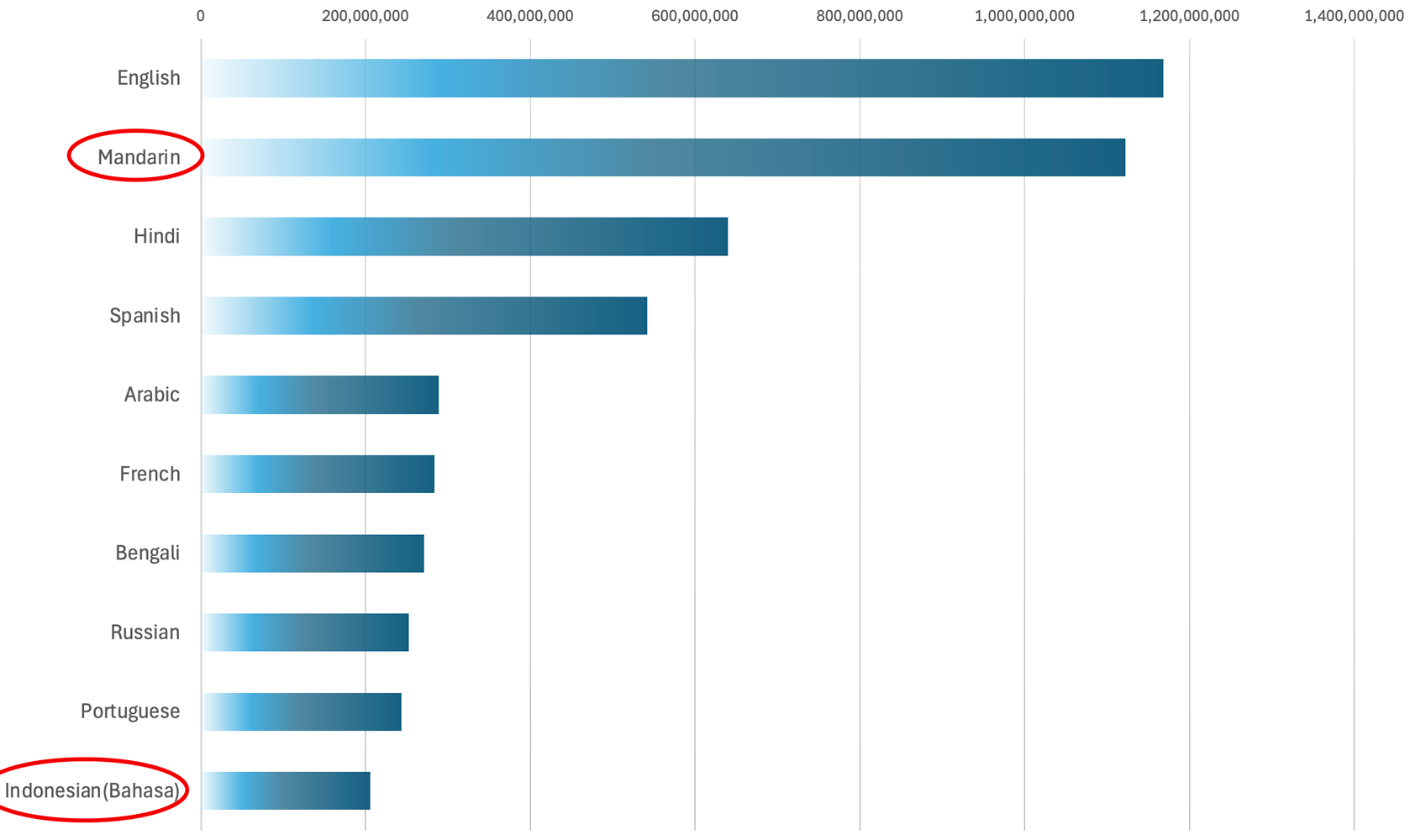The World Youth Bubble


The global youth bubble, particularly in the 0-14, 15-29, and 30-plus age groups, presents a dynamic and complex demographic picture across different regions. In more developed countries, the 0-14 age group is shrinking, reflecting lower birth rates and aging populations, while the 15-29 age group is increasingly characterized by higher education levels and delayed entry into the workforce, often due to economic pressures. The 30-plus demographic in these regions is growing older, with significant implications for pension systems and healthcare.
In less developed countries outside of Africa, the 0-14 age group remains relatively large, though declining slightly as these nations experience moderate economic growth and urbanization. The 15-29 age group is sizable and often faces challenges related to employment, with many young people struggling to find stable jobs or higher education opportunities. For the 30-plus demographic, economic instability and political factors often influence life trajectories, with fewer social safety nets than in more developed countries.
Africa, on the other hand, has a significant youth bulge, particularly in the 0-14 and 15-29 age groups, due to high birth rates and a growing population. This young demographic presents both opportunities and challenges, as many African countries are striving to harness this potential for economic growth while facing difficulties in education, healthcare, and employment. The 30-plus age group in Africa often bears the burden of supporting large families and navigating economies that are still developing, with limited access to social services and retirement security.
Languages of the World

Most Spoken Languages

